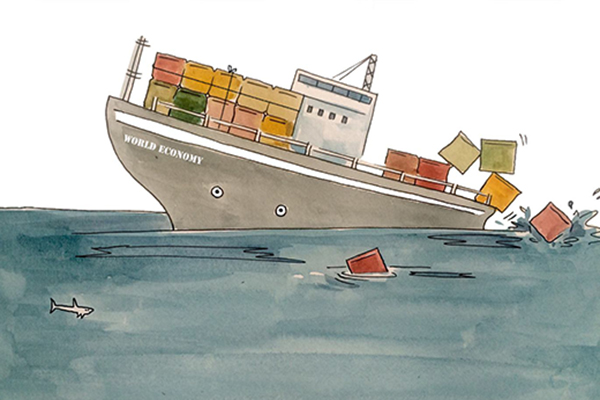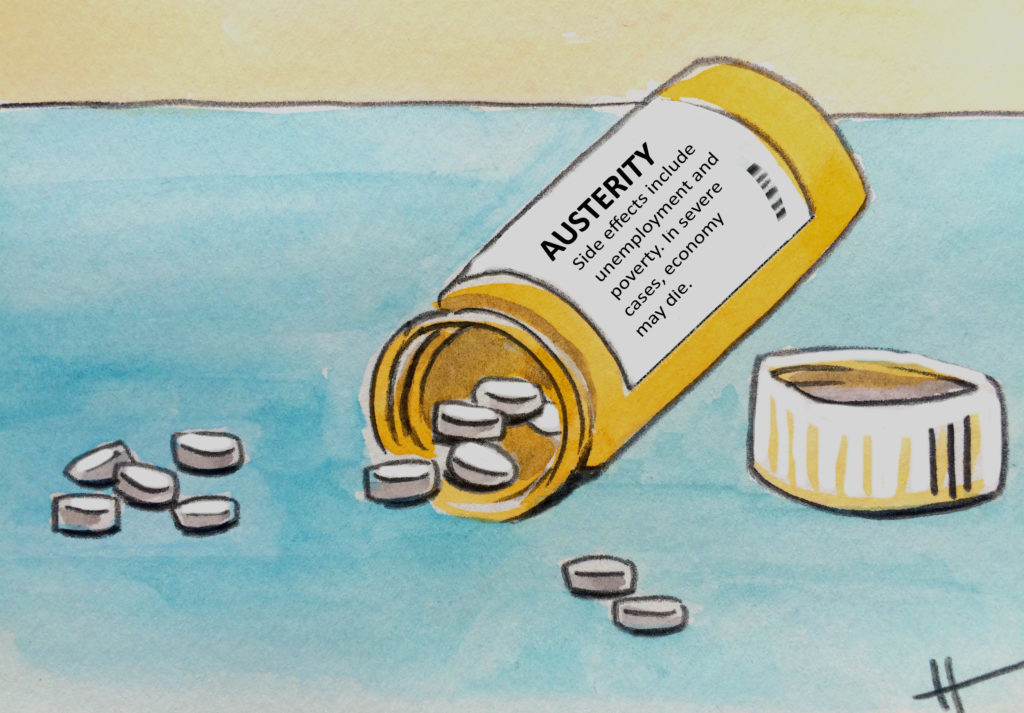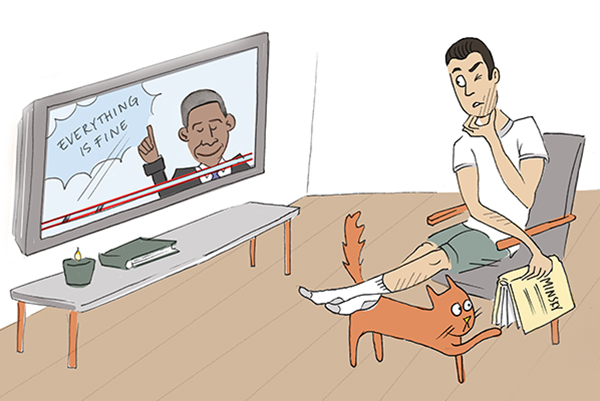Eight years ago, the world economy was shaken by the worst financial crisis since the depression of 1929. Despite the trillions of dollars spent on bailouts and on governments’ attempts to stimulate the economy through monetary policies, the world has not yet fully recovered, and several developing countries are facing their bitterest share just now. Still, many refrain from acknowledging the necessity of governments to engage in a different – and more effective – policy to boost economic activity and employment: fiscal expansions. Nevertheless, the burden is getting so heavy that even the more skeptical are turning to reason.
A recent text written by three important economists at the IMF, titled Neoliberalism: Oversold? has drawn a lot of attention in the past days. Perhaps the most impressive matter that should be highlighted about the text is in its very title: the use of the word neoliberalism, so far mostly used by critics of this agenda that gained strength in the 1980s and generally associated with a sort of “conspiracy theory”. Besides that, the findings of the text should come as no big surprise to non-mainstream economists: instead of economic growth, neoliberalism has brought financial instability and increasing inequality.
This is due to two main pillars of the neoliberal agenda: capital flows liberalization and government fiscal consolidation. Freedom of the capital accounts was expected to bring about a more efficient allocation of resources at an international level. Both developed and developing countries would reap benefits from it: the former by obtaining higher returns on capital investment and the latter by receiving the necessary savings to finance capital development.
The same is true for austerity policies, which would lead to a more efficient allocation of resources domestically. Two main ideas associated with fiscal consolidation are the famous “crowding-out effect,” in which government expenditure would decrease the availability of resources to the private sector thus not resulting in any real change in the economy (a mechanism adjusted by the interest rate), and the “burden of debt”, in which public indebtedness would necessarily lead to higher taxes in the future, then transferring the “burden” to pay off the debt to the future generations.
By looking into data, the IMF authors reach the conclusion that the beneficial effects of such policies “appear to have been somewhat overplayed”. Indeed, instead of stimulating economic growth, those policies have resulted in decreasing output. Capital account liberalization has been much associated with financial instability (especially in the recipient countries), and fiscal cuts with increasing unemployment. Most importantly, such policies seem to lead to increasing economic inequality, which hurts the sustainability of economic growth in the long-run.
Fiscal consolidation and free capital flows have led to the trap that the world economy is now found: a sinking ship commonly referred to as “secular stagnation”. After almost a decade has passed since the financial crisis and advanced economies still have not engaged in fiscal stimulus despite the failure of the non-orthodox monetary policies on bringing about robust growth. Instead of having that money spent into the economy, banks and other private investors were just sitting on it – apparently, not even negative interest rates managed to encourage lenders, showing the limits of monetary policy to generate growth and sustain employment.
Furthermore, in a world in which capital flows are free, high international liquidity was mostly drained by developing economies due to the high-interest rate differentials. The increase in capital flows has a direct impact both on foreign reserve accumulation and exchange rates, which can have disruptive effects for developing countries hurting foreign trade competitiveness and risking a balance of payment crisis. In a case of increasing country’s indebtedness denominated in foreign currency, a change in the perception of international lenders might lead to either capital flood or capital flight.
This deserves special attention in the current state of the world economy. The US has not yet reached the levels of inflation that it aims (despite the plan to continue the interest rate hikes), China is going through a downturn and a restructuring of its economy towards a consumer-based one, Europe is in the brink of dismantling, and Latin America is struggling both politically and economically (with Brazil as one of the protagonists). The drop in global trade and the reverse in money flows can bring about an obstacle to the ability of developing countries to obtain foreign exchange, and thus to meet their foreign debt commitments.
With decreasing global demand and a lack of willingness to make use of fiscal stimuli, the burden of the adjustment during this sluggish riptide is the employment level. In a report from January, the International Labour Organization (ILO) estimated that world unemployment is likely to reach 200.5 million in 2017, an increase of 3.4 million new jobless people within this and the next year, with the developing and emerging economies in Latin America, Asia and Africa taking the worst impact, plummeting along with commodity prices.
How can we stop the ship from sinking? A coherent global effort to generate demand and employment is needed. Governments, especially in countries with greater economic and political leverage (such as US and Germany), should engage in fiscal expansions targeting investment and employment. With investors’ animal spirits leashed, policymakers should not count on the private sector as a source of aggregate demand, and neither on exporting their way out of the crisis – as in a “beggar-thy-neighbor” type of policy. Instead, direct employment creation should be an objective of a global coordination, which then would provide the necessary aggregate demand to revive global trade, besides being a great mechanism to tackle the neoliberal trend of rising inequality.
Ideally, this should be the first step towards a more substantial change in the international financial architecture: from one that incites financial instability through chronic current account deficits/surpluses and abrupt movements of capital, towards one that nurtures and sustains stability and employment in the long-run. [For an enlightening discussion on the subject, see here].
What we shall remember is that although developing countries are being the first ones to fall into the cold waters of depression, the whole ship will sink eventually unless the proper policies are adopted – and austerity and liberalization have proven not to be useful lifebuoys.
Written by Vitor Mello
Illustration by Heske van Doornen







 In order for households to get enough deposits so they can pay back their debts, the government should run deficits that end up in their hands. The reliance on the private sector has taken priority over the public good, and most of the deposits have landed in the hands of the top 1%. They were supposed to “
In order for households to get enough deposits so they can pay back their debts, the government should run deficits that end up in their hands. The reliance on the private sector has taken priority over the public good, and most of the deposits have landed in the hands of the top 1%. They were supposed to “